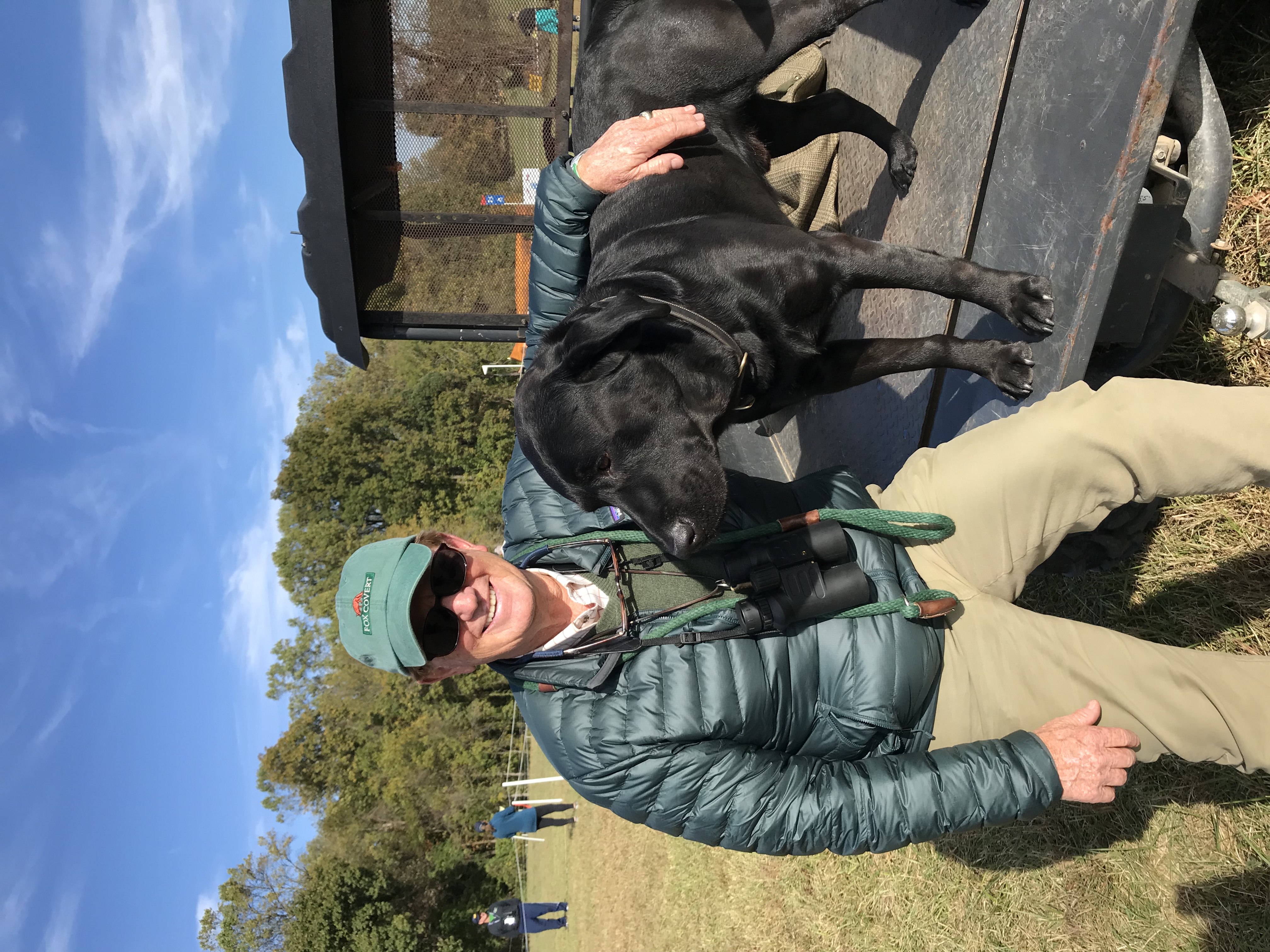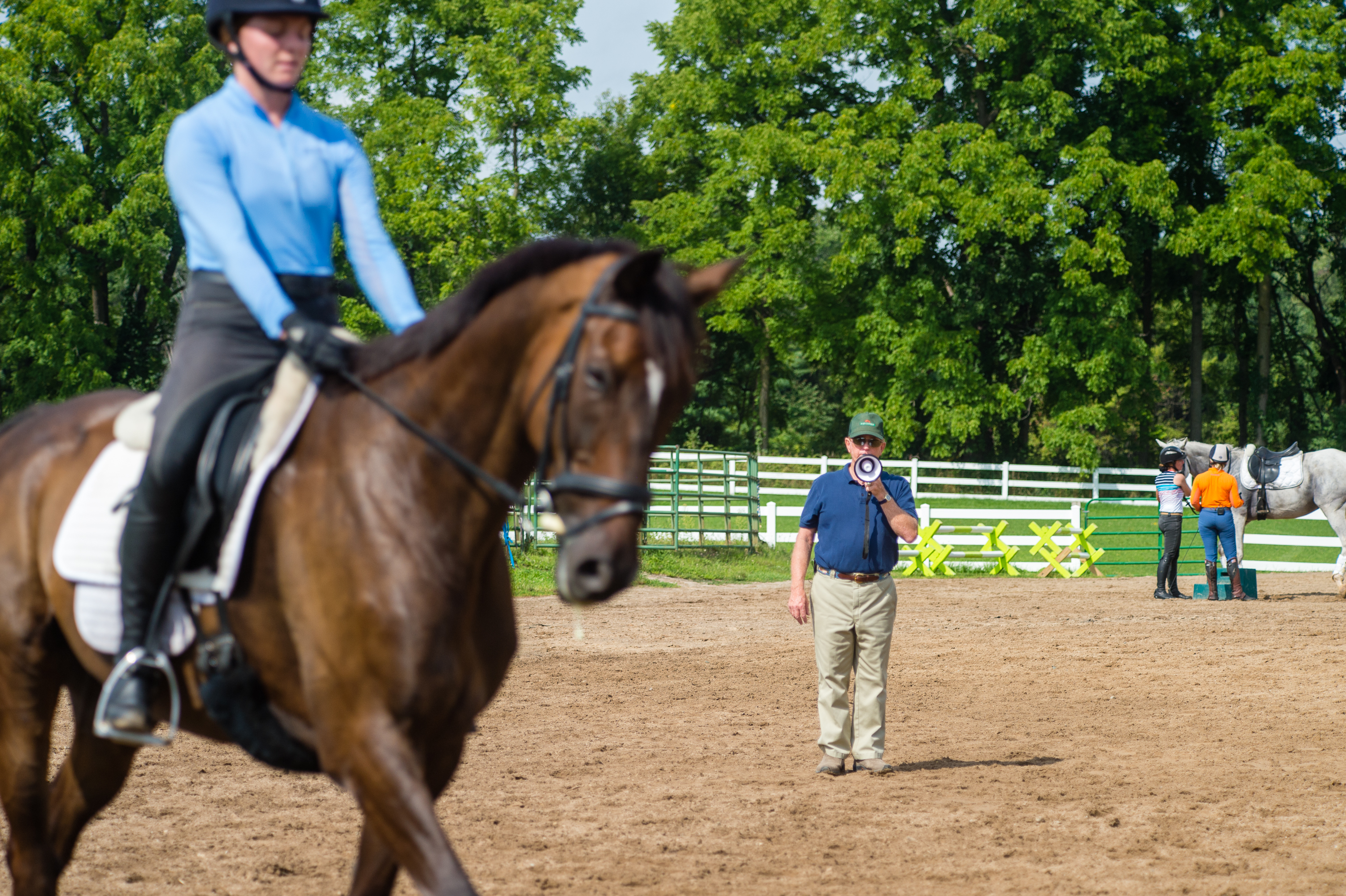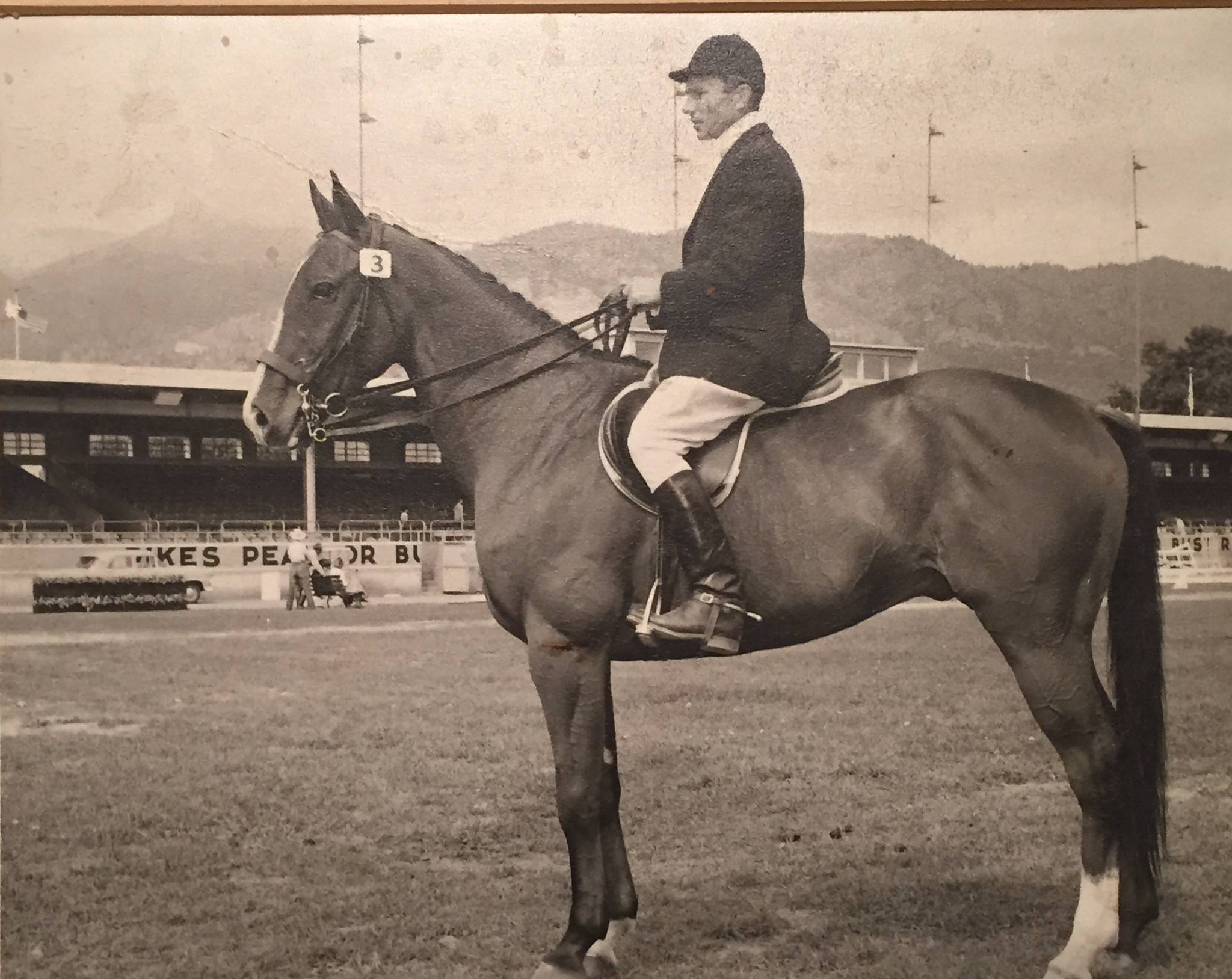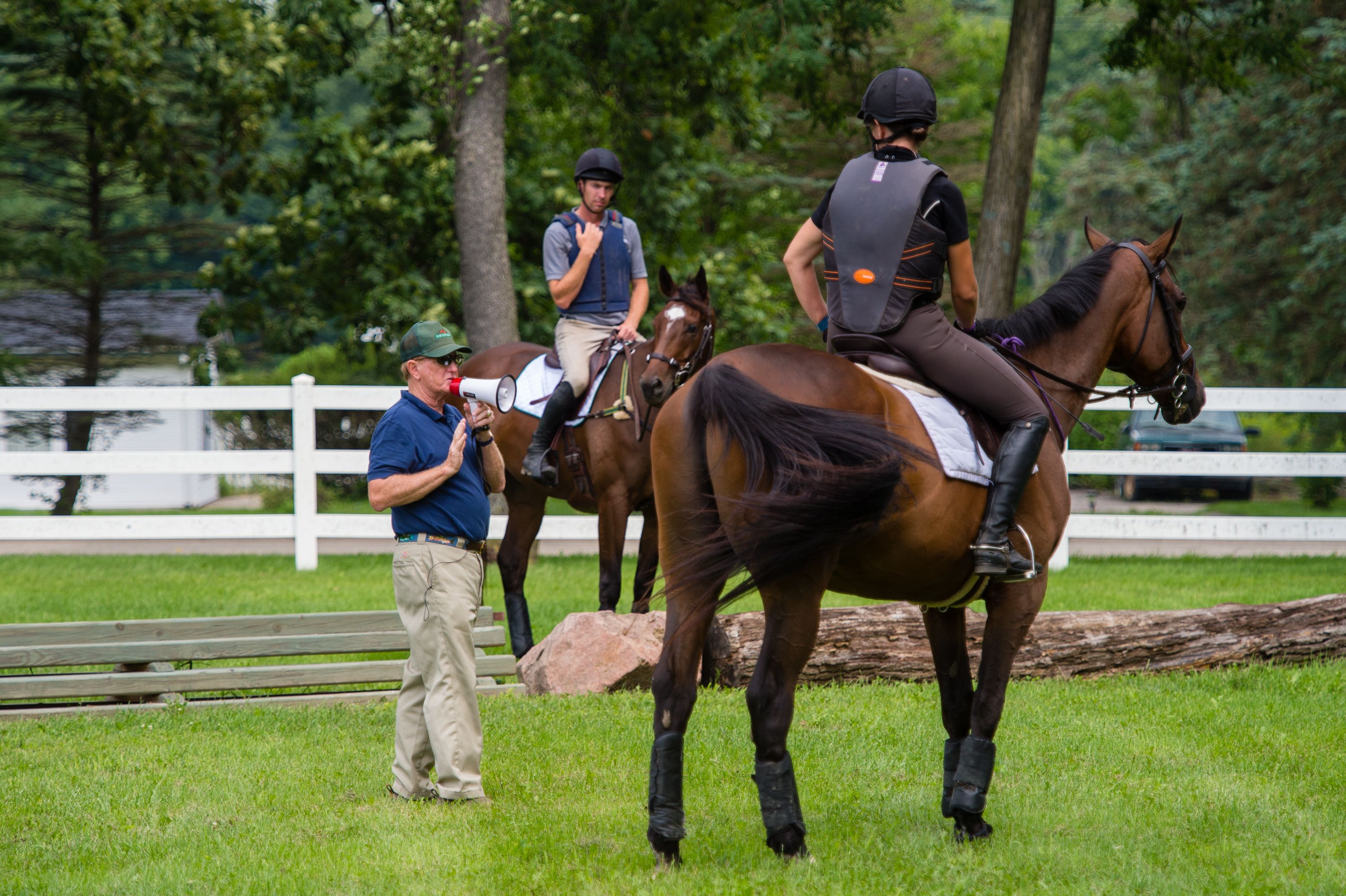Jim Wofford is legendary in the eventing world. As a rider, he competed in three Olympics and two World Championships, earned a team gold medal in the 1967 Pan-American Games and captured the U.S. National Championship five times.
As a coach, Jim has had countless students at the Olympics, World Championships and Pan American Games, and he is a much sought-after clinician. In addition to authoring many books, he has been writing his column, “Cross Country with Jim Wofford,” for Practical Horseman magazine for more than 13 years.

I live about an hour from Jim Wofford so was lucky enough to drive to his beautiful home in Upperville, Virginia. We sat in his library, which holds lots of books and framed photos, with his two black labs, who wandered in and out of the room, occasionally trying to get under the microphone cord, until they settled—one by Jim and one at my feet.
Jim spoke about so many interesting topics that we split the interview into two episodes. In Part 1, which ran October 11, Jim and I spoke about the history of the U.S. equestrian team and his family’s place in it. He also explained where some of today’s training practices started. And he talked about his mentors and shared stories about the great horses in his life.

In Part 2, Jim and I covered a wide range of topics, from what he struggled with as a rider and what he found easy to why he thinks he wouldn’t be a successful rider in today’s short format. He shared how he made the biggest improvements in his riding after what he calls a “down cycle.” And he talked about key issues adult amateur riders face today as well as how they can overcome fear. It’s always interesting to hear what Jim’s pet peeves are and he didn’t disappoint (think bling) and we also discussed how horses use their heads and necks for balance. Finally we end with some interesting comparisons between eventing’s Classic and short formats.
You can listen to the full interview wherever you listen to podcasts, but in the meantime, below are some excerpts from our conversation.
Q: In terms of riding, what were some of the things you struggled with and which parts were easy for you?
A: Because of way that I was introduced to dressage at first, I struggled with dressage later on. I was introduced to it by Jonas Irbinskas who [when I was] age 13, put me up on my brother’s Olympic horse, who knew all the basic movements, and he said, “Jimmy, put your leg here and move your hand here.” … And he taught me shoulder-in, half pass, counter canter, flying change without ever describing them as dressage, although he had somewhat of a dressage background … My point is that later on I had to adjust to the terminology, which wasn’t that bad, but I had to do it on command at a certain place in an arena. I really struggled with that.

In addition, I’m uncomfortable with a horse that is too compressed because as a young man with all those young Thoroughbreds that my mother was breeding of course we started showing them as green and working local hunters. That was their introduction to their show careers to getting them going. They might be fox hunters, they might be show hunters, they might be eventers, but they all went in the ring, and of course, you show those horse in a long loose frame and I’m very comfortable with that. Later on when I was asked to compress the horses, I struggled with that, and still do. I don’t ride them with too much compression in their bodies, even today.
What came the easiest? Cross country. I enjoyed it. The faster we went, the happier I was. And I was too dumb to be scared.
Q: How did you handle disappointments and setbacks as a rider?
A: You just keeping putting one foot in front of the other. I had other horses, especially from 1971 on, I had other people’s horses that I was responsible for and other riders’ careers that I was responsible for and that took you outside of yourself. I don’t mean I didn’t feel them and don’t still think about them. I can remember events that I did not ride well. I’m telling you, you lying awake in a motel room looking at the ceiling, you still remember what that feels like and you hate it. I think that those down parts of the cycle really drive you because if you don’t want to feel that again, well you gotta do something about it.
That’s the part about being an athlete that people don’t talk about enough. Every once in a while you’ll hear an athlete talk about that the tough times are the times that you really improve.
Q: What should Beginning Novice/Novice-level riders think of when preparing for their event season?
A: The key there is the preparation. I make my riders, even if I’m not seeing them on a regular basis, develop a conditioning and training schedule for that horse. These horses don’t have to be racehorse fit, but they do have to be some cardiovascular development to do a four-minute Novice course. The horse has to have some preparation. It’s unfair to just pull them out of an indoor arena, go school a few banks and ditches and take them to a competition. That’s a good way to get your horse hurt.
And you need to train the whole horse. You need to prepare because you have to prepare the dressage, you have to prepare the jumping and the physical condition. … If you start the year fit and prepared, you have a much better chance. To do that, you have to ride regularly and that’s another thing the adult amateurs I would point out to them that they need—saddle time. Most people have heard of the Malcolm Gladwell rule that it takes 10,000 hours of practice to achieve mastery. I’ve read some other studies that say ‘Well, that’s not really true.’ … It takes 10,000 of dedicated practice, dedicated to improvement. … Dedicated practice is “I do not do this well.” … “I don’t see my stride well.” Well, you need to develop your rhythm, you definitely need to put your eye on jump until it goes out of sight and you need to jump a lot of horses. Why is Beezie Madden so accurate? Because she doesn’t have 10,000 hours of dedicated practice cantering to a jump. She has 100,000 hours of dedicated practice. People who are making their living somewhere else don’t have that luxury, but they can a little bit have that attitude. That they’re going to make themselves practice the things that are hard. My horse is always off the bit. Cross your stirrups, improve dressage position and I guarantee you your horse’s dressage results will improve.

Q: What’s one of your biggest pet peeves as a coach?
A: Starting with “my horse did …” No, you. You did. You’re riding. You are responsible for what’s going on. At the upper levels, I’m different because I understand that horses change and sometimes things go on and I really don’t think the rider could have influenced whatever went wrong at that time, and the rider didn’t cause it.
This starts fairly early. In my clinics, occasionally someone will come down a line of fences and they’ll have a knock down. And I’ll say, “Come again. You didn’t have a knockdown.” And I get a little bit of a look. … My point to that rider is you didn’t cause it. The horse didn’t jump high enough. You don’t have anything to fix. Come again. Let the horse fix it. Usually after a knockdown, the horse will overjump a little bit. Reward him. You just landed and cantered away, like whatever. He was punished, you came again, he made a different response and you didn’t respond. That’s not good horsemanship. … Think like a horse.
About the Practical Horseman Podcast
The Practical Horseman podcast, which runs every other Friday, features conversations with respected riders, industry leaders and horse-care experts to inform, educate and inspire. It is co-hosted by Practical Horseman editors Sandy Oliynyk, Emily Daily and Jocelyn Pierce. Future podcasts include conversations with top groom Liv Gude, IHSA founder Bob Cacchione and Pan American Games gold medalist Boyd Martin. Find the podcast at iTunes, Stitcher and Soundcloud, or wherever you get your podcasts.






